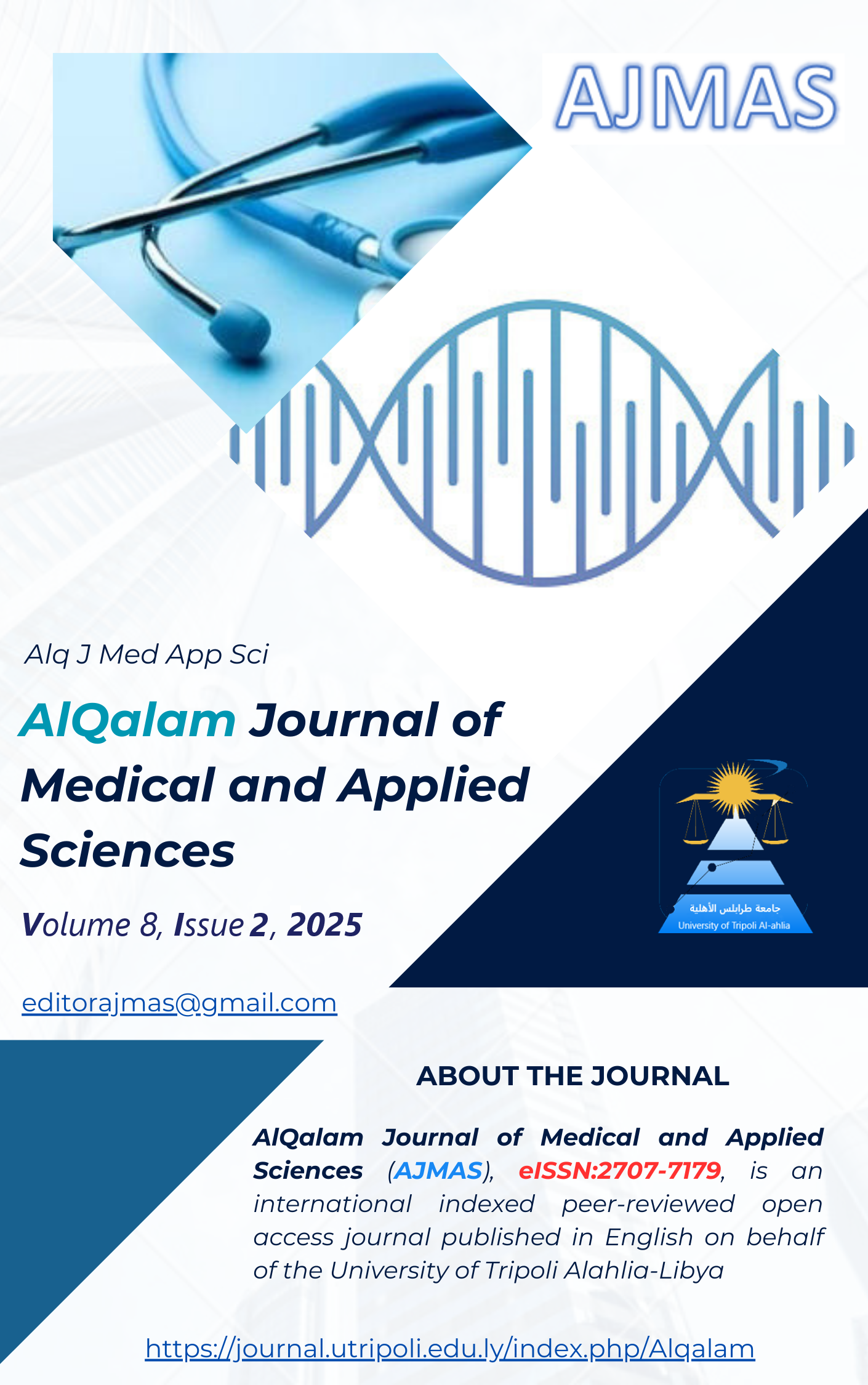Estimate the Contents and Types of Water Well Salts by the Palmer Roger Model Affecting the Corrosion of Al-Bayda City (Libya) Network Pipes
DOI:
https://doi.org/10.54361/ajmas.258229Keywords:
Water, Salts, Network, Pipes.Abstract
Corrosion in drinking water distribution networks is a significant issue that impacts infrastructure longevity, water quality, and the environment. This study focuses on the environmental impact of corrosion in the water distribution networks of Al-Bayda city, Libya. This research aims to measure the impact of drinking water quality on the corrosion of distribution pipes. The study analyzed ten water samples collected from different wells in Al-Bayda. explanation of water quality parameters, such as pH, electrical conductivity (EC), total dissolved solids (TDS), chloride, sulfate, bicarbonate, calcium, magnesium, sodium, and potassium, were measured. The results indicated that calcium bicarbonate (Ca(HCO3)2) was the dominant mineral in most samples, comprising 45% to 59% of the total salts, while sodium chloride (NaCl) was predominant in one sample, making up 56%. The study concludes that the groundwater in Al-Bayda has a significant potential to cause corrosion in the distribution network, primarily due to its chemical composition and low saturation levels of calcium carbonate. Recommendations include regular monitoring of water quality, the use of corrosion-resistant materials, water treatment to reduce corrosive agents, and infrastructure upgrades to mitigate the impact of corrosion.
Downloads
Published
How to Cite
Issue
Section
License
Copyright (c) 2025 Ahlam Abdul Razaq, Hamad Hasan

This work is licensed under a Creative Commons Attribution 4.0 International License.














